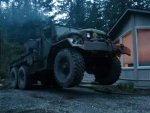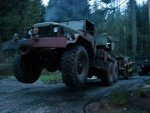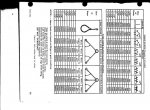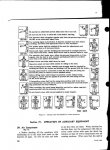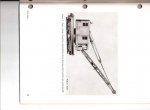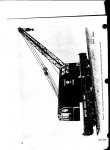June 23rd, 2015.
Gents:
Probably more interesting for me is the lack of a boom tip anti whip line not being used on the wreckers, particularly the larger 5 & 10 ton units, to prevent the wrecker from flipping over backwards in reaction to a lift line parting under (heavy) loads. I was more familiar with 100 and 150 Ton American and P&H truck cranes, and I have seen many go over backwards when a hoist line fails on a heavy lift and the boom tip was not so restrained.
On the railroad 40, 100, 150 and 250 ton wrecking cranes, unless the lift is on the axis of the crane on the track, not only do we block the outriggers heavily, and even sometimes under the frame, but whip lines are always used on the boom tips to protect against a lift line or hoist block failure. It is, or was, not a pretty scene to see a 250Ton steam crane go over the embankment because of either improper blocking, lack of an anti-whip (back) line on the boom, or other such avoidable failures......Especially when trying to rerail a locomotive.....

No heavy lifting in this video, but some idea how ponderous our locomotive cranes could be in operation!
https://youtu.be/IZddfTjqSHw
Safety first is a very good policy to follow....

Also see:
TM-55-2230-201-10,
Operators Instructions
Crane, Railway Locomotive
Diesel Electric, American
Hoist and Derrick, 40 Ton
Model 840DE, 56-1/2 inch Guage
Model 1240 DE, 56-1/2,60-,63- and 656- inch gauges
Headquarters Department of the Army, January 1958
![Thumbs Up [thumbzup] [thumbzup]](https://www.steelsoldiers.com/images/smilies/icon_smile_thumzup.gif)
I could probably scan this as it is only 30 pages long if you would wish to add it to the TM's..... It is for the man who wants to own and operate a very unique item in the green iron stable, and it is not for the faint of heart (or wallet, likely!).



